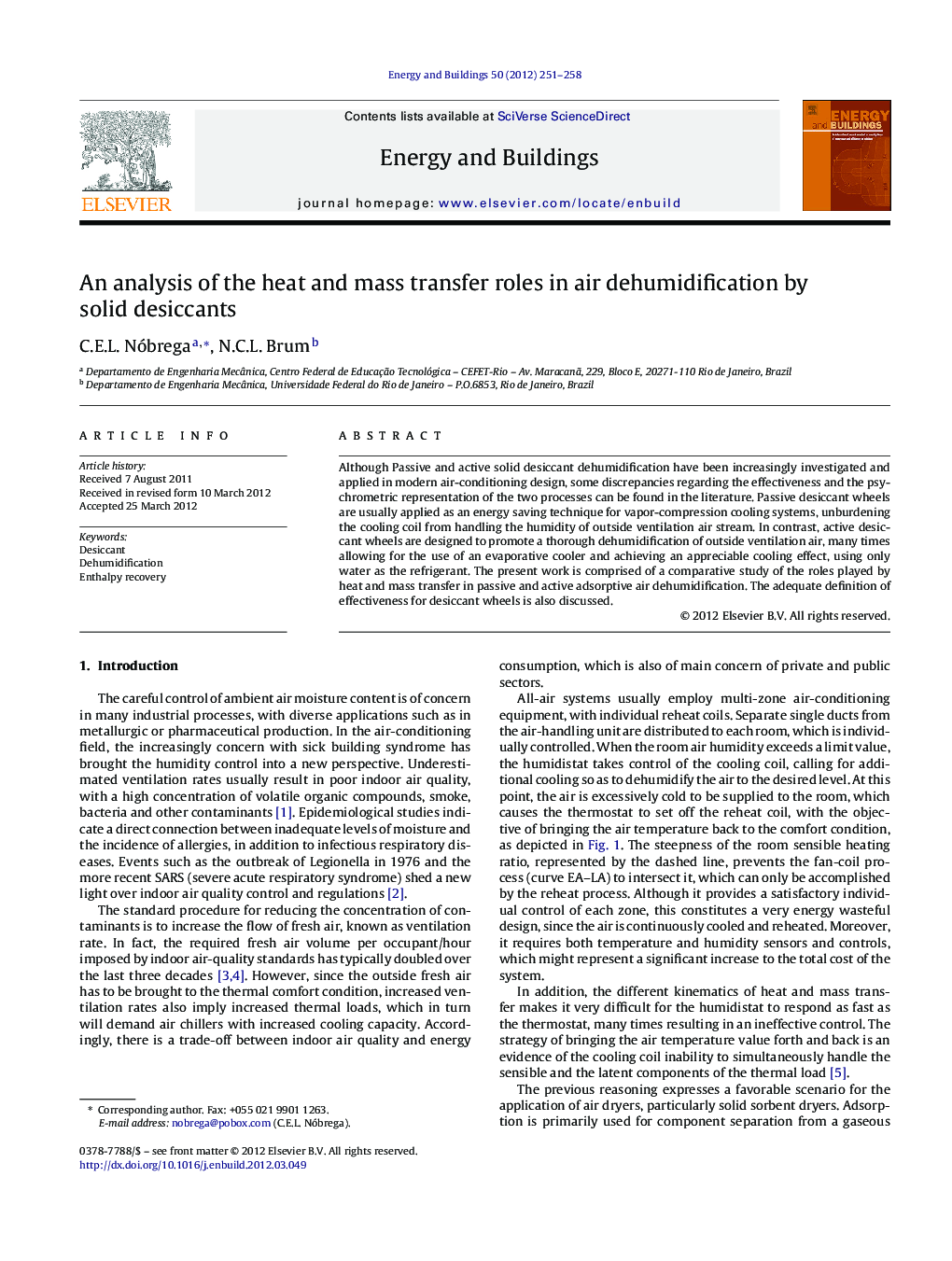| Article ID | Journal | Published Year | Pages | File Type |
|---|---|---|---|---|
| 263768 | Energy and Buildings | 2012 | 8 Pages |
Although Passive and active solid desiccant dehumidification have been increasingly investigated and applied in modern air-conditioning design, some discrepancies regarding the effectiveness and the psychrometric representation of the two processes can be found in the literature. Passive desiccant wheels are usually applied as an energy saving technique for vapor-compression cooling systems, unburdening the cooling coil from handling the humidity of outside ventilation air stream. In contrast, active desiccant wheels are designed to promote a thorough dehumidification of outside ventilation air, many times allowing for the use of an evaporative cooler and achieving an appreciable cooling effect, using only water as the refrigerant. The present work is comprised of a comparative study of the roles played by heat and mass transfer in passive and active adsorptive air dehumidification. The adequate definition of effectiveness for desiccant wheels is also discussed.
► Sensitivity analysis of enthalpy recovery wheels to atmospheric conditions. ► Sensitivity analysis of active desiccant wheels to regeneration temperature. ► Thorough analysis of the transport phenomena in solid desiccant air drying.
